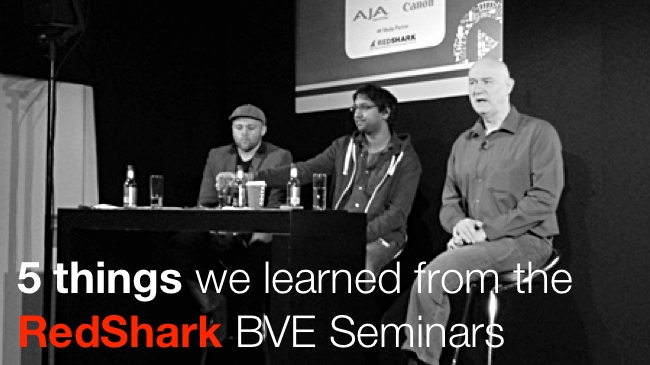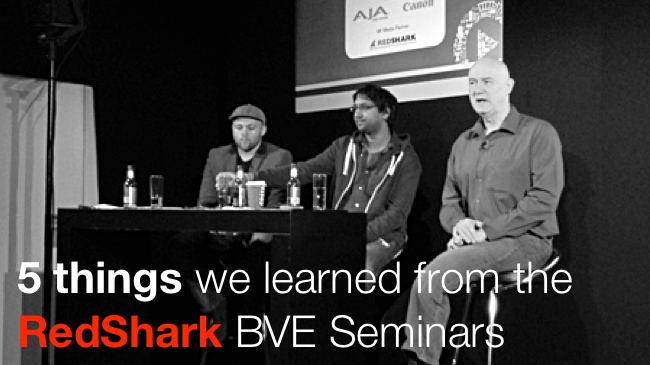
 RedShark's 4K BVE seminars
RedShark's 4K BVE seminars
Here are some fascinating things that we learned from our sessions at London's Broadcast Video Expo
RedShark sponsored and chaired three seminars at the recent Broadcast Video Expo in London last month. We had hoped to record these so that everyone could see them but it wasn't possible in the end. We may bring some of the guests back into the RedShark offices to re-stage the discussions while we video them, but, meanwhile, here are some of the fascinating things we learned at the show.
Raw files are not necessarily huge
Most people imagine that 4K raw files will be enormous, but the fact is that they're not really that big when you're talking about single, large sensor cameras. The reason is that the sensors in question are just a matrix of black and white photosites with a matrix of colour filters overlaid on them.
The raw output from these filtered sensors is not a proper colour picture. You have to feed the raw signal into software that "knows" the arrangement of the colour filters, and which can calculate the correct colour values based on the current pixel, its colour filter, and the surrounding pixels.
It's when you arrive at your final, full-colour signal that you start getting very large file sizes.
If you watch film in a typical provincial cinema, you'll be seeing 1.5 K if you're lucky
Much lauded for it's visual quality though film is, sharpness is not one of its better characteristics, if you're watching a multi-generation copy in a local fleapit. Apparently, if you're in one of the few remaining cinemas that hasn't gone digital (actually, there must be still quite a few of them), then you're probably going to be lucky if your viewing experience even approaches HD.
Quality is not the same as resolution. You can have fantastic resolution without quality
Just because you have more resolution, it doesn't mean that you have better quality. You can have poorly focused 4K, or it can be badly lit, or lacking in contrast. VFX artists like 4K simply because it reduces aliasing (the "staircase" effect you get with diagonal or curved lines in an image).
You should think about how much your production is worth when you're considering your backup budget.
If Tom Cruise and Christian Bale are near the top of your cast list, don't use a single USB drive to back up. Think more in terms of the money they spend on aircraft doors, which you don't want to, you know, blow open at 37,000 feet. You don't want your storage to dump the master copies of your material, so take whatever steps you need to ensure that your material is safe.
People are starting to talk about Petabytes routinely.
A three hour film, shot in 4K, including all the rushes and all the CGI and VFX material can soak up between 500 and 1000 Terabytes. That's 0.5 - 1.0 Petabytes. Which is 0.001 Exabytes, by the way.
Tags: Technology


Comments